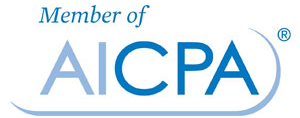
Charles Read, CPA, USTCP, IRSAC
President/CEO GetPayroll
Find me on LinkedIn
Workers’ compensation insurance is not strictly a payroll function. But if you have employees on payroll in any state except Texas, you may be required by law to carry it. So let’s examine it because if you have payroll you will almost always have workers’ compensation insurance.
WHAT IS WORKERS’ COMPENSATION INSURANCE?
The first workers’ compensation law was enacted in the United States in 1911 by the state of Wisconsin. By 1948, every state had some form of “workmans’ comp.” Basically this is a government-mandated social insurance pact between employers and employees. Employers are forced to cover medical care and provide wage replacement for employees hurt on the job; in return, workers’ compensation benefits become the only remedy available for workers. Even though courts have upheld this concept for almost one hundred years, occasionally in cases of bad faith courts have overridden this exclusive remedy.
Workers’ compensation (referred to often as workers’ comp) is a form of accident insurance paid by employers. No payroll deductions are taken out of employees’ earnings for this insurance. If an employee is injured on the job or acquires a work-related illness, workers’ comp will pay the employee’s medical expenses. If the employee is unable to work it will also provide wage-loss compensation until the employee is able to return to work.
Benefits are usually paid by a private insurance company or state-run workers’ comp fund. It also provides benefits to dependents if a person dies as a result of a job-related injury.
Not all employees are covered by state workers’ comp insurance. Some federal employees are covered by other compensation laws administered by the US Department of Labor (DOL) or other special cases or occupations. Energy Employees Occupational Illness Compensation Program, the Federal Employees’ Compensation Program, the Longshore and Harbor Workers’ Compensation Program, and the Black Lung Benefits Program serve the specific employee groups. Some states and municipalities have an in-house program to cover workers’ comp claims.
State Rules Cover What?
Every state sets its own exact rules. These rules cover a number of items, including:
When an employer must get and keep coverage in place.
A minimum number of employees, if more than one.
What industries may not require coverage (for example, agricultural workers).
What workers are covered (normally independent contractors are excluded).
What illnesses are covered by workers’ compensation.
Compensation for injuries that are permanent.
What Injuries Are Covered?
Workers’ compensation coverage is designed to cover accidents that happen on the job. It may include certain illnesses if the state defines them as work-related. For instance, in California, employees who suffer from work-related stress may be able to receive workers’ compensation benefits under certain circumstances.
The work-related injury does not have to stem from a single instance. Repetitive stress injuries and conditions caused by long-term exposure to environmental hazards may be covered if the state specifies them.
Employees may not need to be at the work site to be covered. If the employee is involved in a work-related task at the employer’s direction and receives an injury they may well be covered. Normally injuries while commuting are not covered.
Some states allow employees to be tested for substances such as alcohol or drugs which would have rendered the employee unfit to be working. If these substances are self-administered, the employer may be held not liable and the employee will be unable to collect benefits from a workers’ comp policy. Workers’ comp normally does not usually cover self-inflicted injuries or intentional acts. It may not also cover injuries deliberately caused by other employees or other parties.
Exclusive Remedy
Workers’ compensation is often considered the “exclusive remedy” for job-related injuries because it generally gives employers immunity from lawsuits in exchange for coverage of medical costs, missed work, and other injury-related expenses. The employee is not required to prove fault in order to collect. However, immunity from lawsuits in exchange for workers’ comp benefits is not absolute in all jurisdictions or situations. In rare situations, the employee will be able to sue the employer for additional sums in excess of workers’ comp benefits.
Employer Responsibilities
In addition to carrying and paying for workers’ comp insurance, employers may be required to perform some or all of the following:
Post notices of coverage.
Provide emergency medical treatment.
Provide continuing treatment if the employee does not choose a doctor.
Report injuries to the appropriate state workers’ comp office and their carrier.
Comply with requests for information from the state workers’ comp agency.
Provide for employment when the employee is able to return to work.
Not retaliate against an employee who files a workers’ comp claim!
Employee Responsibilities
Report any injury immediately.
If you need medical attention seek it immediately.
Cooperate with all parties; seek legal advice if you have questions.
MONOPOLISTIC STATES VERSUS NONMONOPOLISTIC WORKERS’ COMP STATES
North Dakota, Ohio, Washington, and Wyoming do not allow private insurance companies to sell workers’ comp policies in their states. These states are referred to as monopolistic states because employers must purchase workers compensation coverage from a government-operated insurance fund in that state. Unlike a competitive fund, a monopolistic state fund is the sole source of workers’ compensation insurance in the state. It has no competitors because private insurance is not permitted.
Other states allow private companies to sell workers comp policies based on market forces. The state still sets requirements and coverage terms but not price. The employer is required to carry coverage by law. All states have assigned risk pool for companies where the company’s calculated risk is too high for an insurance company to want to underwrite. This pool will use one of several mechanisms to provide coverage to those companies that cannot otherwise obtain the workers’ comp coverage required by the state.
COST OF WORKERS’ COMP COVERAGE
It is a little complicated to calculate workers’ comp premium. The premium is based on several factors including:
Class codes
Number of employees
Payroll
Claims history
Class Code
The classification code (class code) is determined by each state or by National Council on Compensation Insurance (NCCI) and adopted by a state. Each code represents the type of work performed by the employees of the business. Each type of job has its own code. Every code has a rate attached. This rate is multiplied by the hours worked (see “Premium Calculation” further on). This code is designed to approximate the risk of a particular job. The more dangerous the job, the higher the attached rate (per hour), and therefore the higher the premium for hours worked in that job.
As you would expect there are times where codes do not match the actual job and something similar has to be used until the state sets up a new class code. This can cause problems, see the “Dirty Little Secret of Workers’ Comp” further on.
Payroll
For workers’ compensation purposes, payroll means money or payment other than money. Your premium calculations for the payroll number including the following:
Wages or salaries including retroactive wages or salaries.
Cash received by employees for commissions and draws against commissions.
Bonuses.
Extra pay for overtime work–not including the overtime premium.
Pay for holidays, vacations, or periods of sickness.
Payment to employees on any basis other than time worked, such as piecework, profit sharing, or incentive plans.
Payment or allowance for hand tools or power tools used by hand provided by employees either directly or through a third party and used in their work or operations for the insured.
The rental value of an apartment or a house provided for an employee.
The value of lodging, other than an apartment or a house, received by employees.
The value of meals received by employees.
Davis-Bacon wages paid to employees or trusts.
Excess expense reimbursements to employees.
Payroll does not include the following for workers’ comp purposes.
Tips and other gratuities received by employees.
Payment by an employer to group insurance or group pensions plans for employees.
The value of special reward for individual invention or discovery.
Dismissal or severance payments except for time worked or for accrued vacation.
Payments for active military duty.
Employee discounts on goods purchased from the employee’s employer.
Expense reimbursements to employees on an accountable plan.
Supper money for late work.
Work uniform allowance.
Third-party sick pay.
Employer contributions to salary reduction, employee savings plans, retirement, or cafeteria plans
Perks provided:
An automobile.
An airplane flight.
An incentive vacation (e.g., contest winner).
A discount on property or services.
Club memberships.
Tickets to entertainment events.
Claims History /Experience Modification (Mod)
Your experience mod is a comparison of your workers’ comp claims with other companies of similar size operating similar businesses. It helps give you the ability to control your workers’ comp costs by maintaining a low claims rate to achieve a low experience mod. It is also why there is pressure by employers to not have employees report workers’ comp claims, as it will raise their overall premium.
The actual process of calculating the experience mod is complex, but the purpose of the formula is pretty straightforward. Here’s how it works: your company’s actual losses are compared to its expected losses by industry type. Factors taken into consideration are company size, unexpected large losses, and the difference between loss frequency and loss severity.
The experience mod for your company is calculated by the National Council on Compensation Insurance (NCCI) or in some states, by an independent agency. Experience rating is a required step that applies to all employers that meet a state’s premium eligibility criteria for the plan.
The experience mod modifies your premium. If you have a mod greater than one because of your company’s claim history your premium will be modified upward, increasing your cost. If your company has a lower-than-average claims history then your experience mod will be less than one and when applied to your premium it will lower the overall costs.
How to Maintain a Low-Experience Mod
Make sure your experience mod is accurate. Verify what is used to create the mod.
The mod is more sensitive to many small claims rather than an occasional big one.
Have a safety program that reduces accidents and therefore claims.
Have a back-to-work program to reduce compensation payments.
Educate first-level management about workers’ comp, safety, and how to handle injuries. Where there are good relations between first-level management and workers, history shows lower claims.
Be careful whom you hire. Make sure the worker is right for the job. If they can’t handle the job based on physical, physiological, training, experience, or any other reasons claims will be higher.
Premium Calculation
A premium calculation is a simple formula once you have the class code and modifier:
Premium is based on each $100.00 of wages paid. The class code determines the base premium rate for the wages
You have an employee with a class code of 8810 which is a Clerical Office Employee NOC (not otherwise classified). A rate for that clerk might be $0.35 per hundred dollars of earnings. So if you pay that clerk $25,000 per year your workers’ comp premium would start at $87.50 per year. ($25,000.00 / 100 = 250. 250 × $0.35 = $87.50). If you have no modifier, then that is your premium for that clerk.
You have an employee who does commercial roofing with a code of 5551, which is Roofing – All Kinds (Commercial). A rate for that employee might be $5.40 per hundred dollars of earnings. So if you pay the employee $25,000.00 per year your workers’ comp premium would start at $1350.00 per year. ($25,000.00 / 100 = 250. 250 × $5.40 = $1350.00). If you have no modifier, then that is your premium for that roofer. If you have a poor claims rate and an experience modifier of 1.25, the premium would rise to $1687.50 ($1350.00 × 1.25 = $1687.50).
Rates can vary from a few cents per hundred dollars of wages paid to over $12.00 per hundred dollars of wages paid before any experience modification.
Payment of Premium
Traditional Payment
Traditionally each company would estimate their workers’ comp premium with their carriers and would be required to deposit as much as 20% of the annual expected premium at the start of the insurance contract which normally lasts for 12 months. The company would then be required to pay additional portions of the premium as the year went on. At the end of the year, there would be an audit of the payroll and a calculation of the actual premium incurred. Additional payment or a refund would be paid depending on the audit outcome.
Pay as You Go
Because of the advent of computerized payroll, it is now possible to calculate the workers’ comp premium on a per payroll basis. Each employee is assigned their class code, or codes, in the case of multiple work functions. The premium is input into the payroll system for each appropriate class code. The payroll system or payroll provided can calculate the premium the carrier has earned to the penny. That amount can be transmitted to the carrier who automatically debits it from the insured’s account.
There are substantial advantages to everyone in a pay-as-you-go system. The carrier does not have to calculate possible premiums for deposits, and they don’t have to do an audit every year. They also don’t have to issue refunds for overpayments or chase down clients for additional premium amounts.
For the employer, there is no deposit, no audit, and they pay exactly what is due based on actual payroll and not a penny more.
Interested in learning more about GetPayroll services?
Are you shopping for new payroll services? Schedule a demo to see if GetPayroll is right for your business.
If you are a current GetPayroll customer (yay!), take a look at some of our new services that may help streamline your business operations.
Comments and Suggestions
Don’t forget to leave us a comment below and tell us what you think. If you have any requests or suggestions, we’d love those too!










